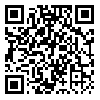Volume 7, Issue 4 (9-2020)
jbrms 2020, 7(4): 20-30 |
Back to browse issues page
Download citation:
BibTeX | RIS | EndNote | Medlars | ProCite | Reference Manager | RefWorks
Send citation to:



BibTeX | RIS | EndNote | Medlars | ProCite | Reference Manager | RefWorks
Send citation to:
Samadi A, Abbassi Daloii A, Barari A, Saeidi A. The effect of twelve weeks of combined training with and without canagliflozin consumption on fetuin A and fetuin B in type 2 diabetic men. jbrms 2020; 7 (4) :20-30
URL: http://jbrms.medilam.ac.ir/article-1-436-en.html
URL: http://jbrms.medilam.ac.ir/article-1-436-en.html
Department of Exercise Physiology, Ayatollah Amoli Branch, Islamic Azad University, Amol, Iran , abbasi.daloii@gmail.com
Abstract: (3357 Views)
Introduction: Cardiovascular disease, diabetes, and fatty liver are now considered the major causes of mortality in developing countries. The present study investigates the effect of twelve weeks of combined training with and without canagliflozin consumption on fetuin-A and fetuin B in type 2 diabetic men.
Materials and Methods: Forty- four men (25-40 years ) who had type two diabitiac were recruited for this study. This is a double-blind study conducted in four groups. For this purpose, diabetic men were divided into four groups of 11 individuals, including control-diabetes, diabetes-medication, diabetes-training, and diabetes-training-supplementation. Every day, 200 mg of canagliflozin and placebo were given to medication-consuming and placebo groups. Blood samples were taken before and 48 hours after the last training session and used for analysis.
Results: Two-way ANOVA results showed a significant difference between groups (P<0.001) for fetuin A-amounts. Bonferroni test results also showed a significant difference between control and training (P = 0.030), control and medication-training (P<0.001), medication-training, and medication (P<0.001) and medication-training and training (P= 0.001) groups. The two-way analysis of variance showed significant differences between groups (P = 0.023) in terms of fetuin B amounts. The post hoc test results showed a significant difference between control and training groups (P = 0.009) and control with training-medication groups (P = 0.007).
Conclusion: According to our results, the administration of a combination program, alongside the use of canagliflozin, on individuals who have type 2 diabetes may have the most significant effect on reducing these hepatokines in people with diabetes.
Materials and Methods: Forty- four men (25-40 years ) who had type two diabitiac were recruited for this study. This is a double-blind study conducted in four groups. For this purpose, diabetic men were divided into four groups of 11 individuals, including control-diabetes, diabetes-medication, diabetes-training, and diabetes-training-supplementation. Every day, 200 mg of canagliflozin and placebo were given to medication-consuming and placebo groups. Blood samples were taken before and 48 hours after the last training session and used for analysis.
Results: Two-way ANOVA results showed a significant difference between groups (P<0.001) for fetuin A-amounts. Bonferroni test results also showed a significant difference between control and training (P = 0.030), control and medication-training (P<0.001), medication-training, and medication (P<0.001) and medication-training and training (P= 0.001) groups. The two-way analysis of variance showed significant differences between groups (P = 0.023) in terms of fetuin B amounts. The post hoc test results showed a significant difference between control and training groups (P = 0.009) and control with training-medication groups (P = 0.007).
Conclusion: According to our results, the administration of a combination program, alongside the use of canagliflozin, on individuals who have type 2 diabetes may have the most significant effect on reducing these hepatokines in people with diabetes.
Type of Study: Research |
Received: 2019/06/17 | Accepted: 2019/09/17 | Published: 2020/09/19
Received: 2019/06/17 | Accepted: 2019/09/17 | Published: 2020/09/19
Send email to the article author
| Rights and permissions | |
 |
This work is licensed under a Creative Commons Attribution-NonCommercial 4.0 International License. |





